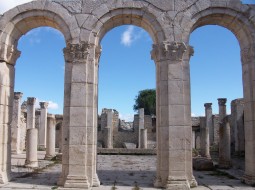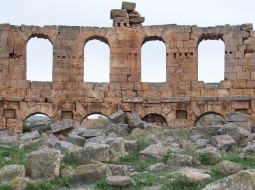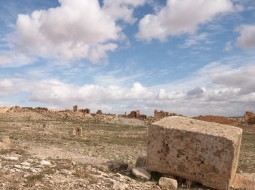Tourism Events
Since around ten years, we haven’t stopped a volunteering campaign for the rich products that provides the Tunisian cultural Heritage. This artistic and cultural adventure has first begun with the first exhibition of antic monuments pictures of Tunisia that were unknown from the general public. As a photograph artist and researcher, Sami Harize has presented in January 2009 an exhibition named : « Lumière sur l’Archéologie Antique de la Tunisie » (Translation : “Focus on antic archaeology of Tunisia”). These monuments, essentially Roman, have been developed on 27 pictures to the great delight of tourists and locals. It was the occasion to make people aware of the sumptuousness of these sites that were waiting to be visited.
Here’s was said the TAP (Tunis Afrique Presse – Afric Press Tunis) :
« Focus on antic archaeology of Tunisia”, an exhibition of the photograph-researcher Sami Harize, in the Sidi Bou Saïd Gallery, 12/01/2009.
It’s an unusually outstanding exhibition about the precise theme : archaeology redeveloped, through generally unknown sites from the general public, presented in 27 large-framed pictures. Sami Harize, new artist-photograph, professional guide and teacher, speaking several languages, seems giving 100% implication on the documentary photo language.
Great lover of the ancient stone, he succeeds to make it talk no matter how it is : whatever it is about great columns raised to the skies or Fallen capitols on below the temples and the sanctuaries or triumphal arches, to mention as examples Dougga, Chemtou, Haidra, Makthar and Ain Tounga. The well-handled zoom captured all the significant facts of the stone. The fact that the handled sites were uninhabited excepting by its souls gives a outdated scenery that doesn’t stop to bringing back our memory. A civilization has made its move right here, notable the Africa Romana.
Far from the secondary and artificial effects, the photography shows us on this exhibition from 7 until 14 January 2009, the refined profiles of these remains : pinkish or ocher stone from which a certain contrast appears with the clear sky to erect as a witness of posterity.
A great part of these pictures exposes classical monuments on antiquity. The capitol of Dougga (the most beautiful of Africa) admires you from its monumental steps. Its pediment shows the imperial apotheosis.
The triumphal arches often commemorate grate victories and conquests. The triumphal arch of Makthar (Maktharis) is simply majestic. It reminds us the richness of proconsular Africa of the Pax Romana era. We also see the forum of Makthar, public meeting place on the Roman era.
The Romans excel on hydraulic infrastructures. They succeeded on capturing water and bring it where they wanted. On each town we see a complex of cisterns to keep water. Outside of the town we find aqueducts that provided other towns with water. The Romans knew how to bypass relief and topographical constraints.
The most important aqueduct of the Roman Africa is the Aqueduct of Zaghouan with its 132 kilometres to supply Carthage. Spectacle and leisure monuments occupied an important place on people’s life. Circuses, theatres and amphitheatres where built. One of the east know but most beautiful is the one of Althiburos (current médina) in the North West of Tunisia.
Growing insecurity of the “razzias” on that period obliged the Byzantine to build forts and fortifications that have been made with materials and stones from the sites themselves sadly degrading them.
The photo is here to witness and may be also to denounce. »
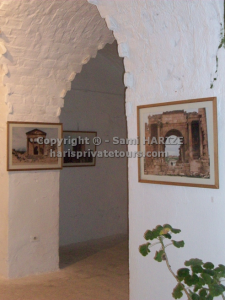
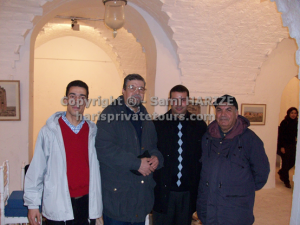
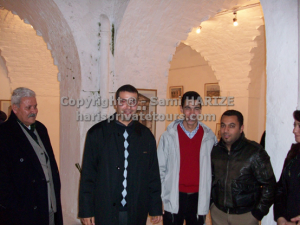
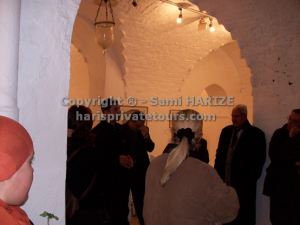
« After having accomplished my Masters and my researched on museography and cultural heritage, and following to my nomination on tourism education in the Institute of High Tourism Studies of Sidi Dhrif (“Institut des Hautes Etudes Touristiques de Sidi Dhrif”), I could follow my path on cultural events by proposing conferences and seminars around the theme but treating several and varied subjects.
There has been a great interest by Medias about these new methods and about putting in value the Tunisian cultural heritage. The events posters globally presented these subjets in order to avoid falling on detailing too much. In a general way, the cultural events that we have initiated in a continuous way were specific, and characterized by the diversity of subjects linked to cultural heritage. The events involved the right and adequate stakeholders in order to treat the questions, professionals from Tourism, protagonists of alternative tourism, artists, cultural associations, VIP travel agencies, conference specialists about the treated questions, cultural guides, etc.», Comments made on 20 March 2016.
Event posters can be seen on he following Photo Galery : Events posters
Event photos can be seen on he following Photo Galery : Events photos

